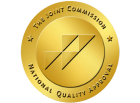How often have you and a group of friends “met up for a few drinks”? Do you have anyone in your phone that is little more than a “drinking buddy”? For millions of men and women, this is a very common lifestyle and culture. Alcohol consumption for them has become as much of a hobby as it has a habit. Maybe it started in college. Maybe even earlier. While this on it’s own is not inherently bad, it can lead to greater problems should a relaxing night out with your friends spiral into something more serious.
In America, alcohol is the most commonly abused substance as well as one of the most common addictions. Due to how alcohol consumption is either glamorized, made light of or generally talked about in the media, it is widely accepted socially. As it is legal, alcohol is very easily obtainable, even for underaged drinkers. Despite the constant warnings of drinking and driving, or other negative stigmas, alcohol abuse continues to rise and remain as a culture of its own.
Alcohol Abuse Stats and Numbers
Data will help give us a clearer understanding of just how dangerous alcohol consumption is. You can learn more frightening stats and information by visiting the National Institute of Alcohol Abuse and Alcoholism website.
- In 2018, approximately 14 million adults over the age of 18 had an alcohol abuse disorder.
- Sadly only 8 % of these individuals received treatment.
- Approximately 400,000 adolescents under the age of 17 also suffered from alcohol use disorder.
- Around 88,000 people die every year from alcohol related causes.
- Alcohol abuse is the third leading cause of preventable death in the United States.
- About 10,000 people die every year from drinking and driving.
- In 2018, there were around 40,000 deaths related to liver disease caused from alcohol abuse in people over the age of 12.
Deadly Addiction
In a study done by pharmacologists in 2010, it was determined that alcohol abuse is more harmful to the body than heroin or crack addiction. Due to being linked to over 60 diseases, the high risk of vehicle mortality and sexual and physical misconduct and assault, it is considered to be the most dangerous substance. During these studies, researchers looked at a list of factors while determining how dangerous a substance is. Here is what they looked for:
- Dependence
- Mortality Rate
- Damage to Mental Functions
- Damage to Lifestyle (such as work or homelife)
- Criminal Activity
- Injury
- Financial Burden to the Country
Though hard illegal substances can have many negative impacts on the items listed above, alcohol was the unfortunate winner. Abuse affects families, the individual and even the economy more so than any other. Let’s take a deeper dive into how alcoholism affects the faculties of life.
Dangers of Alcohol on the Body
As alcohol is absorbed into your bloodstream, it makes its way throughout the body. It continues to hold its rank as one of the deadliest drugs consumable, and part of that is because it can impact nearly every facet of the body. While many substances affect the body in terrible ways, none have such a complete effect as alcohol does. Alcohol addiction can lead to many different cancers, diseases and complications, such as:
And this is not even all of the issues that can come up because of alcohol abuse or addiction. The way that it affects the body so completely is what I tend to call a full continuum of destruction.
These do not include the physical dangers associated with dangerous or deadly vehicular accidents, birth defects that occur commonly due to alcohol abuse during pregnancy or the constant physical and sexual abuse. This also doesn’t not take into account that lowered inhibition leads to unsafe sex and the spread of sexually transmitted diseases.
Dangers of Alcohol on the Mind
With so many physical ramifications of alcohol abuse, it is not surprising that it comes with a laundry list of terrible mental side effects as well. We discussed some of the behavioral changes of abuse – violence such as violence and sexual misconduct – but there are plenty more to help solidify drinking’s rank as number one in dangers.
- Hallucinations
- Blackouts
- Addiction
- Memory Loss
- Concentration Loss
- Reduced Reaction Time
- Confusion
- Abnormal Vision or Eye Movements
- Loss of Muscle Coordination
- Tremors
- Behavioral Changes – such as aggression
Alcoholism and Relationships
Earlier we asked if you have any drinking buddies, or groups of friends that you call upon when you want to have a drink. How many of them are in successful relationships? How many times have you witnessed arguments during drinking between two partners? It should come as no surprise that due to the psychological influences of alcohol, that social interactions will be different. The sad part is, that because of how accepted it is in our society, drunken arguments and fights are often given a pass and chalked up to, “things I said while I was drunk”. Over time, these begin to have a profound impact on your relationships.
This is compounded even more if only one partner is the regular consumer of alcohol or if children are involved. Children who witness “drunken arguments” can develop psychological trauma – especially if they witness violence. Many times those “drunken arguments” lead to arguments where only one person has been drinking, which will, over time, lead to resentment. If one partner drinks to excess regularly and the other does not, the one who consumes less may start to lose respect for the heavier drinker.
Studies have estimated that nearly half of all marriages where one partner is a heavy drinker will lead to divorce.
Withdrawing from Alcohol Addiction
As if the abuse itself did not carry enough of a physical and mental toll, alcohol is also one of the deadliest substances to quit. Withdrawal from alcohol is especially painful and if you abuse alcohol regularly or for many years, it can prove deadly without the help of a professional medical detox team. Many of the patients that we treat at our medical detox facilities come in for alcohol addiction and detox.
As with other substances and addiction, over time the body becomes used to and dependent upon the depressant. The nervous system must readjust to life without the presence of alcohol. Withdrawal will include common discomforts such as:
- Shaking
- Sweating
- Headache
- Nausea
- Anxiety
- Fever
But there are also some very serious, potentially fatal risks…
Fatal Withdrawal Symptoms
While many people can reduce their alcohol consumption over time, and quit in a healthy manner at home, more serious alcoholics experience potentially fatal withdrawal symptoms such as Delirium Tremens. DTs, as they are often called, are reserved for more experienced drinkers and generally occur about two days into withdrawal. This can lead to:
- Vivid Hallucinations
- Delusions
- Extreme Confusion
- Powerful Seizures
- Death
As your metabolism jumpstarts and begins to move at its normal speed – which is significantly faster than while on alcohol – the heart moves much quicker. This system shock can lead to unexpected heart failure or heart attacks.
For people who have been drinking for the majority of their lives, it is important to seek the guidance of a medical professional or receive treatment from a licensed rehab facility.
What does Alcohol Recovery Look Like?
After you have quit your addiction to alcohol, be it at home or through the help of medical detox, it is recommended that you begin a sober life with counseling and support. Group therapy and meetings like Alcoholics Anonymous are a wonderful support system to keep you staying sober. One-on-one therapy is another fantastic resource to help discover and understand the root of your drinking dependency and find coping mechanisms to help begin your life clean of alcohol.
Alcoholism is truly a disease of the body and mind. It claims thousands of lives per year, but does not have to claim those of yourself or your loved ones. Hope is out there and help is available.
Reach Out
If you or someone you know is struggling with substance abuse of any sort, please reach out to us at (877)-RECOVERY or 877-732-6837. Our team of addiction specialists make themselves available to take your call 24 hours a day, 7 days a week. We are here to help, to be a friend, to show support and to be a positive life in a dark time. Because We Care.






